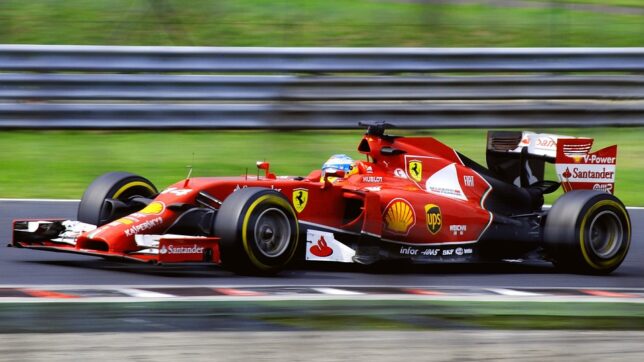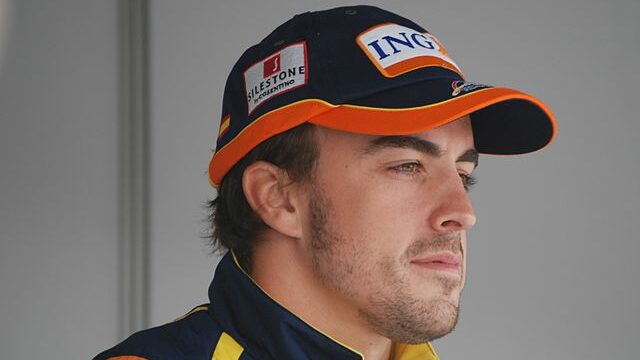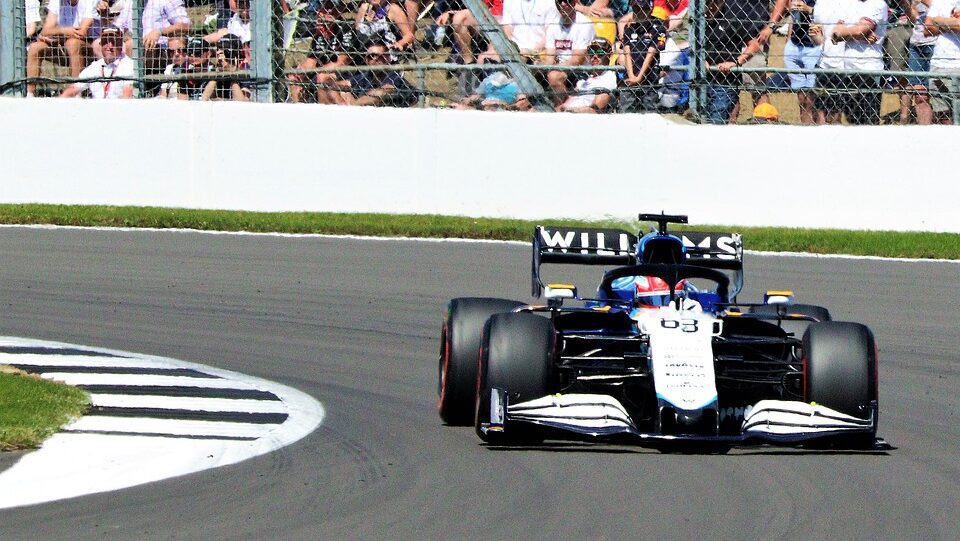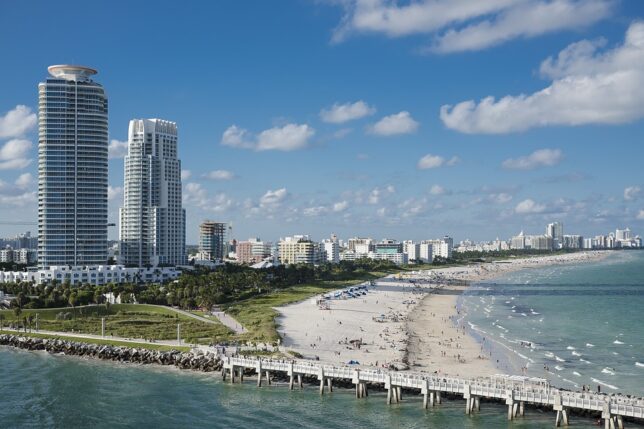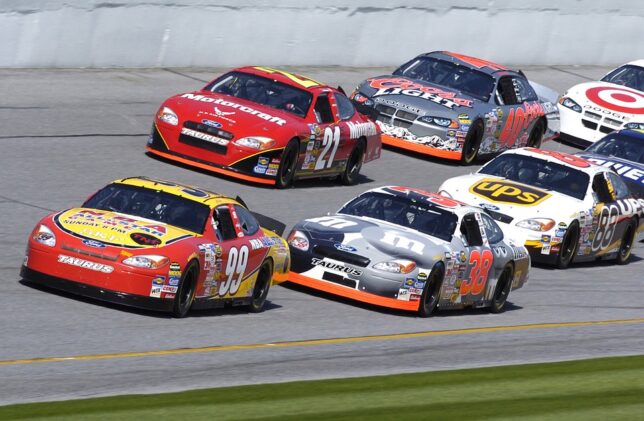
Sophie Clare reviews her time spent trackside at the 2021 X Prix in Dorset, hosted by Extreme E, and recaps her favourite moments.
On the weekend of December 17th & 18th, I was lucky enough to attend the Extreme E Jurassic X Prix in Dorset with Aakash, our Speakers and Events Officer. Not only were we representing CUMFS, but we were also able to attend on behalf of Volta Future Positive. Our fantastic behind the scenes access to the inaugural season finale of the innovative off-road electric racing series made this a day to remember.
I arrived on the Saturday morning – this meant that I had plenty of time to explore the race site, get my bearings, and prepare for race day on Sunday. My first port of call (after receiving my accreditation and wrist-bands) was a tour of the paddock. The team garages, storage units, canteen, media centre, medical structures and the Command Centre are all formed from inflatable shelters created by Airshelta. This means that much of the race site can be packed up and shipped between race locations via the St Helena, the series’ floating paddock. During the race weekend, the St Helena was docked in Poole harbour; it was great to talk to some of the crew members from the ship over the course of the weekend.
After exploring the very muddy paddock and getting a glimpse into the teams’ trackside operations, I was able to speak with Catarina Silva from Continental Tyres, and Adam Bond, CEO of ASC Energy. Continental provides unique, ultra-high-performance tyres for Extreme E, designed to provide optimum performance across the range of conditions encountered during the season. These have included extremes of both heat and cold in Saudi Arabia and Greenland respectively, as well as the variations between sandy, muddy and icy terrains. It was particularly interesting to hear about Continental’s plans for recycling and repurposing the tyres Extreme E has used over the course of the year. AFC Energy provides the Extreme E paddock with hydrogen fuel cell technology. As a result, the race fleet is charged off-grid, using sustainably generated zero-emission energy. The only by-product of the process is water, which can then be used elsewhere on the race site.
The racing action we got to watch over the course of the weekend included Qualifying, the Crazy Race, Semi Finals and Final. The Crazy Race was particularly fun to watch because it provided the three slowest qualifying teams the chance to fight for a single spot in the Final. Andretti United rose to the occasion and the Semi Finals then determined the rest of the final line up: x44, Rosberg X Racing, JBXE and Acciona Sainz XE. One of several opportunities to hear from the drivers involved in the championship was a Q&A session with Jamie Chadwick, Sébastien Loeb and Mikaela Åhlin-Kottulinsky, who discussed not only the racing, but their thoughts on Extreme E’s Legacy Programme- this included their learnings about the environment and climate change. They were interviewed by Extreme E Impact Correspondant Izy Rekiel, who has been living on the St Helena ship and reporting on the progress of the championship. If you want to find out more about the different behind the scenes aspects of the St Helena, Extreme E in general, and how the Legacy Programmes are carried out in each of the different race locations, her reporting on this is invaluable.
On Sunday, Aakash and I set off to the race site ready for a busy day. First we went down to the fairly quiet paddock, where we could watch as the teams prepared for the Semi Finals. Our early-morning exploration also proved fruitful as we were able to speak with Nico Rosberg, team principal of Rosberg X Racing and 2016 Formula 1 World Champion! He gave us an insight into his experience being team boss rather than driver, as well as sharing his enthusiasm for the sporting series and its focus on taking action on issues relating to the environment and gender equality, amongst other things. Over the course of the day we were also able to interview the founder of the series Alejandro Agag, as well as several drivers such as Dakar legend Jutta Kleinschmidt and the brilliantly funny Christine GZ.

Image Credits: Sophie Clare
We got to watch in the paddock as drivers from each team took part in Grid Play proceedings – one of the range of fan engagement opportunities utilised by Extreme E. Fans vote for their favourite drivers and the team with the most votes gets the first choice of starting position for the Final. This then filters down to the other teams, with the Crazy Race winners getting last choice. The teams which don’t make it through to the Final still get to use their votes, by donating their votes to one of the finalist teams. Track position made a big difference in the Final, since a starting position which avoids the muddiest areas would give drivers the traction necessary to make a strong start to the race.
We grabbed some lunch after this – a delicious Christmas dinner in the canteen with Clare from Volta Future Positive. It was a nice chance to take a breather following a busy morning, and again demonstrated the actions Extreme E takes to “race without a trace” – everyone brings their own reusable cutlery and plates, which they then have to wash up in a designated area before returning to the paddock. This saved a considerable amount of single use plastic being used because items such as disposable drinks cups, cutlery and plates were not necessary.
Soon, the stage was set for the culmination of a year of closely fought racing – the Final. Five teams were vying for a coveted place on the podium, but the focus was on Rosberg X Racing and Lewis Hamilton’s x44. Each team had the chance to win not only the Jurassic X Prix, but the inaugural Extreme E championship. Ultimately, x44 did indeed top the podium, however RXR finished 4th, leaving both teams equal on points in the championship standings and delivering victory for RXR based on count-back to their previous race wins.
Watching this tense battle unfold on large screens across from the switch zone and viewing platform was exhilarating! The atmosphere was fantastic and the excitement of everyone watching was palpable. We could see the start line in the distance and had a good view of the ending stage of each lap, but our main vantage point was of the switch zone. This is where the two drivers of each team swap out following the completion of their first two laps of the three lap race. There were some very entertaining tactics so that the drivers avoided picking up too much mud on their race boots, as well pouring jugs of water over the cars to clean mud away from the windscreen.
Seeing the electric SUVs up close emphasised the huge scale of these vehicles – the car’s peak 550bhp output is capable of bringing the 2.3-metre wide vehicle from 0-62mph in 4.5 seconds, at gradients of up to 130 per cent. Each powered by a Williams Advanced Engineering battery, the distinctive electric whine when they charge away from the switch zone is really striking. When driven at slower speeds, however, the Odyssey 21 is almost silent – meaning that a few honks of the horn are used to notify those in the paddock that the car is turned on!
It was a very surreal experience to watch the podium celebrations in person, instead of on the TV, particularly when the national anthems were played and champagne was sprayed. x44 celebrated their first podium after qualifying fastest in every race weekend, while Rosberg X Racing were crowned inaugural Extreme E champions and celebrated with a mud fight!

Copyright: Sam Bloxham, Extreme E Media Centre (using Creative Commons License)
Just in time for the post-race Press Conference, we picked up some hot chocolate in reusable coffee cups produced by Lyfecycle. These perhaps demonstrate the attention to detail in implementing Extreme E’s environmental message: these are the first fully biodegradable coffee cups which decompose completely without leaving microplastics in the environment. Armed with our hot chocolate, we took our seats in the media centre and heard from Alejandro Agag, as well as the drivers from Rosberg X Racing, x44, JBXE and Andretti United. It was great to ask them our questions and hear their reflections on the race weekend and the series as a whole. We made one last trip back to the paddock which was particularly atmospheric in the dusky, misty evening. George Imafidon, an engineer from x44, gave us a tour of their garage – a particularly exciting experience for Aakash as the resident engineer on the CUMFS committee. He took the opportunity to ask some technical questions while we were looking around. My quest for an x44 beanie was also fulfilled – ending the weekend on a high note. Bundled up in our college puffers (naturally) and mud-covered wellies, it was time to start the journey home after an incredible weekend!
Do stay tuned for more of my writing on the race weekend and Extreme E, which will be published by Volta Future Positive. Thank you to Extreme E and Volta Future Positive for the opportunity to attend my first ever race weekend – it’s an experience Aakash and I are very grateful for! Do let us know your thoughts about Extreme E – we will be holding watch parties for the upcoming races of its second series, the first of which will take place in Saudi Arabia on the 19th-20th February 2022. We’re hoping to plan some exciting events (virtual and in-person) with Extreme E in the near future, so if you have any suggestions please do let us know!
For more information, check out our Instagram – where we posted about our experience. The Extreme E website (https://www.extreme-e.com/) is full of information about the racing format, drivers and teams, and the Legacy Programme. Check out Izy Rekiel’s reporting from the St Helena, which is most easily found on her Instagram @izyofficial.
